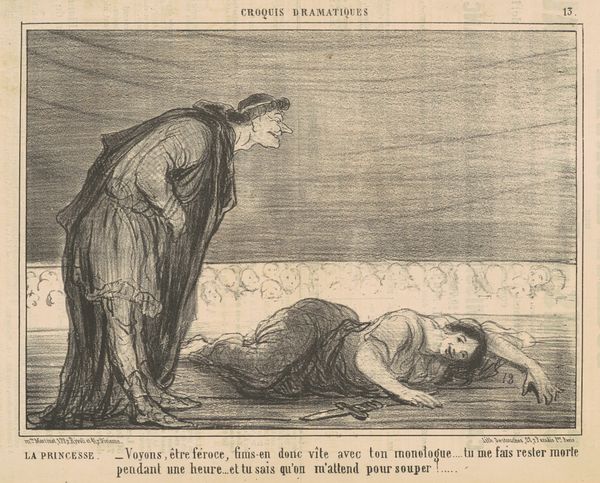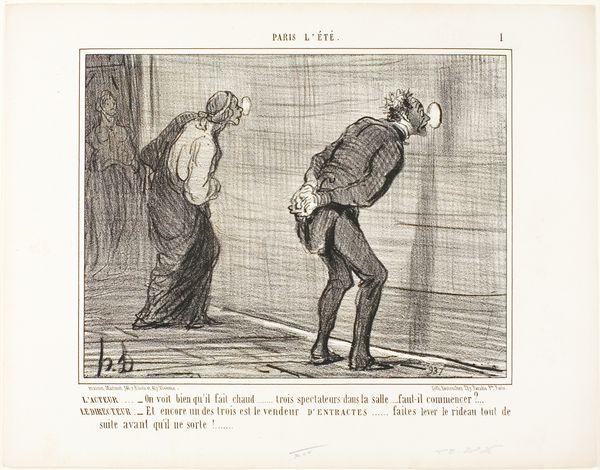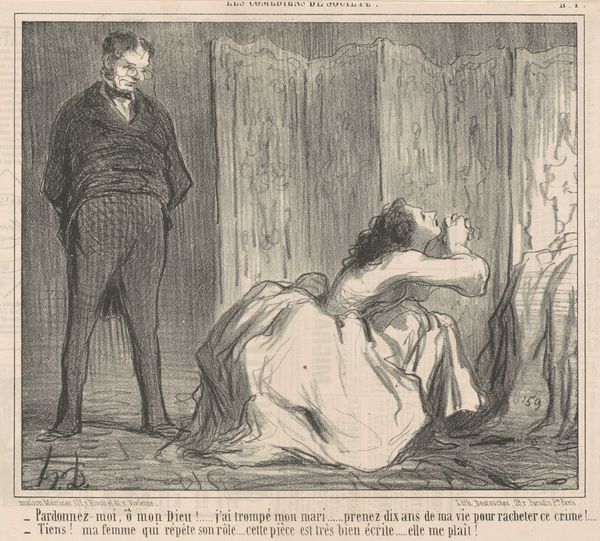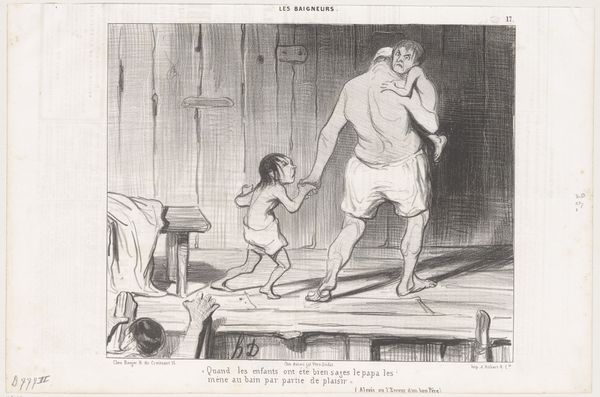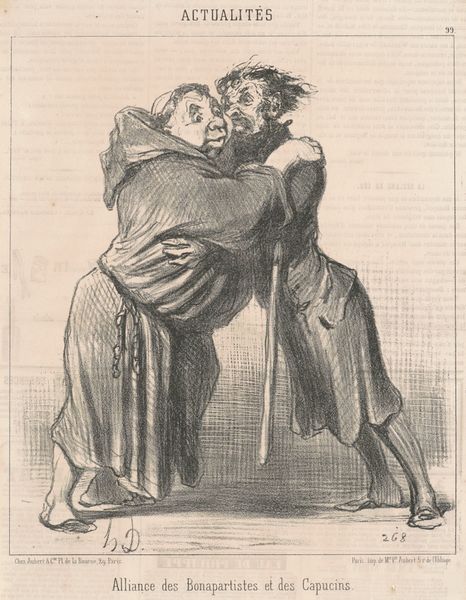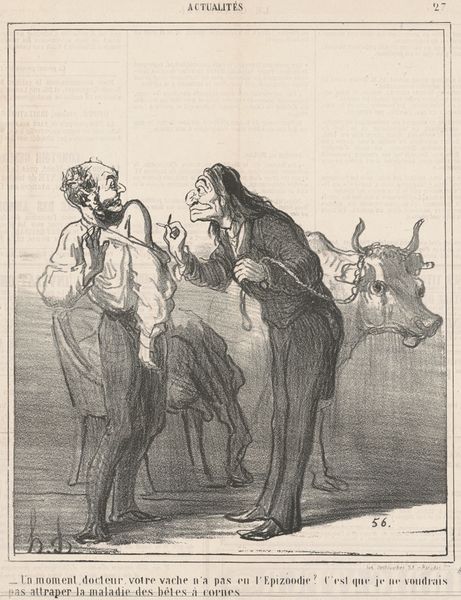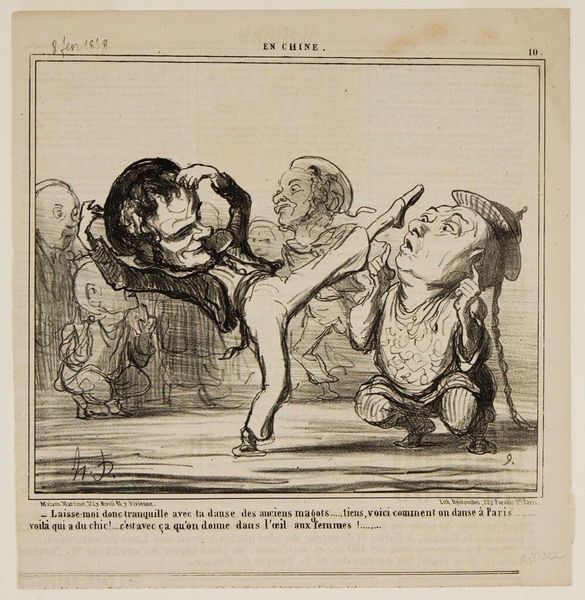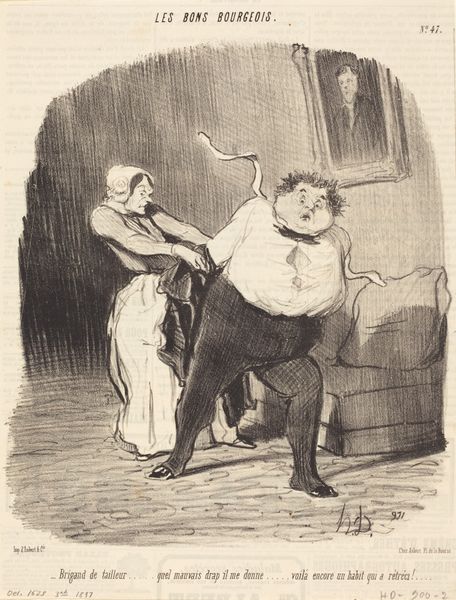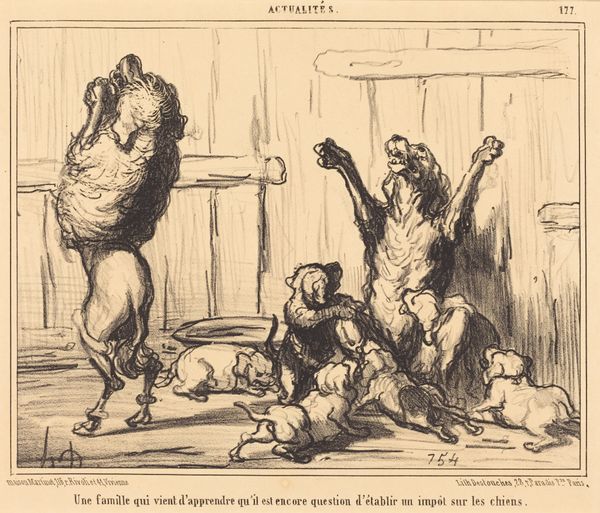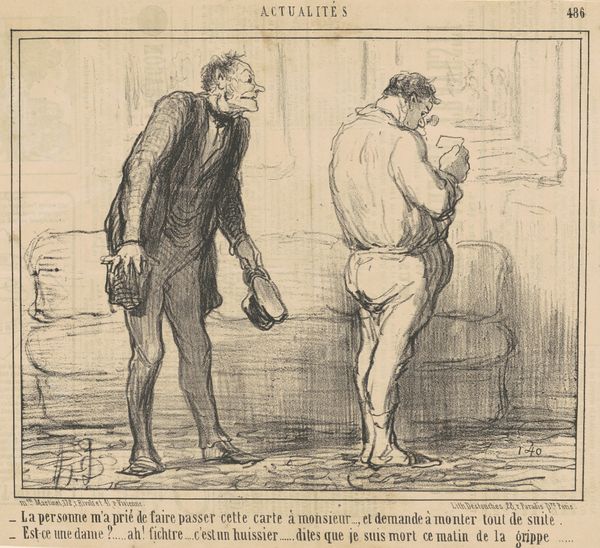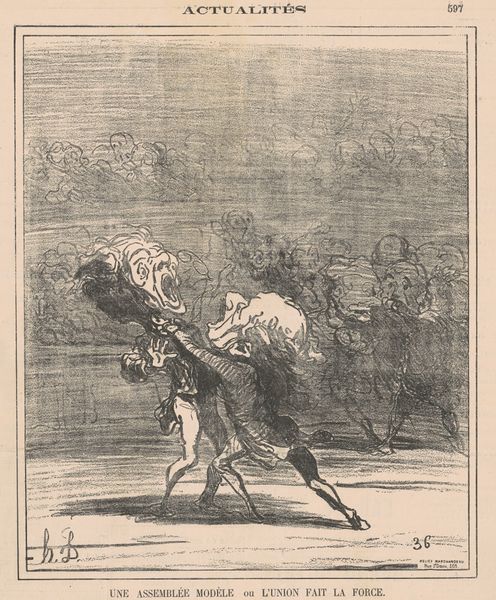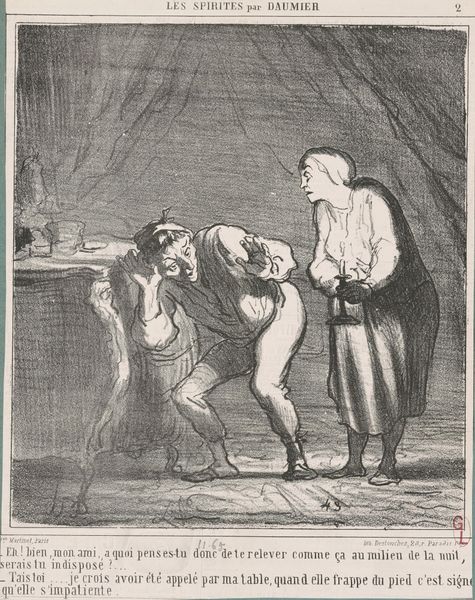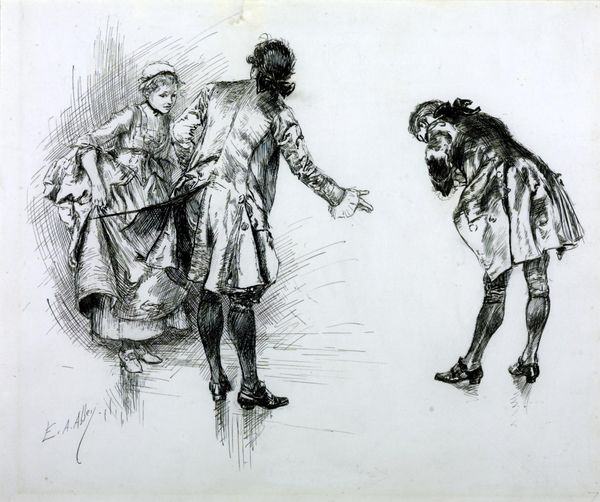
V'la une p'tite femme qu'est pas paresseuse ... c. 19th century
0:00
0:00
lithograph, print
#
lithograph
# print
#
caricature
#
figuration
#
romanticism
#
genre-painting
#
realism
Copyright: National Gallery of Art: CC0 1.0
Editor: This lithograph by Honoré Daumier, made sometime in the 19th century, is called "V'la une p'tite femme qu'est pas paresseuse..." which translates to "Here is a little woman who isn't lazy..." The scene is so intriguing with the distressed woman and the pulling man. What strikes you about it? Curator: The title drips with irony, doesn't it? It prompts us to question the roles these figures are forced to play. This is not simply a comedic observation but a critique of the societal constraints placed upon women, relegating them to the private sphere while men dominate the public one, even if it's only backstage. How do you see the contrast between their depicted roles and perhaps Daumier’s underlying message about their lived realities? Editor: I see how the artist might be questioning societal roles! The woman appears confined by her massive skirt and hidden face, while the man's pulling on the ropes. I wonder how class might intersect with gender here. Curator: Absolutely. Consider the performance context implied – is this backstage at a theater? What power dynamics are in play if we consider the individuals involved? Is the man an stagehand, wielding a form of labor and control the woman lacks? The print subtly implicates the very act of spectating in maintaining these power imbalances. What if the woman were looking outwards instead of inward, demanding space? Editor: That’s powerful! I initially saw only a humorous scene, but now I see a commentary on the limited opportunities afforded to women, complicated by class. Curator: Daumier's brilliance lies in that layered complexity. He uses humor as a Trojan horse to introduce deeper social critiques about gender, class, and the very fabric of 19th-century French society. Seeing beyond the surface allows us to connect art with activism, acknowledging the ways in which art holds space for progressive messages. Editor: I learned a lot by digging into the image with questions about its historical context! Thank you for broadening my perspective. Curator: It was a thought-provoking exploration for me as well! Seeing art as part of the social narrative keeps it relevant.
Comments
No comments
Be the first to comment and join the conversation on the ultimate creative platform.
